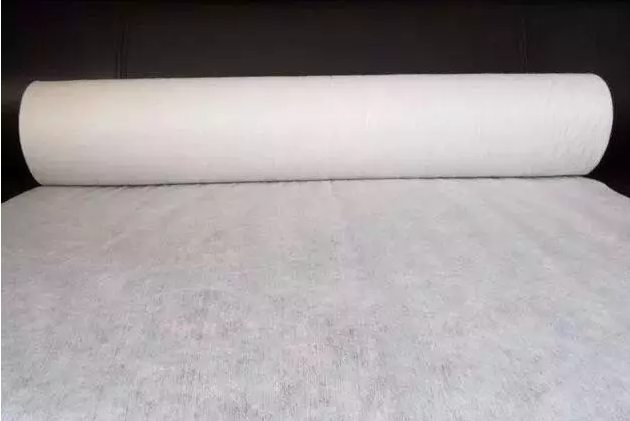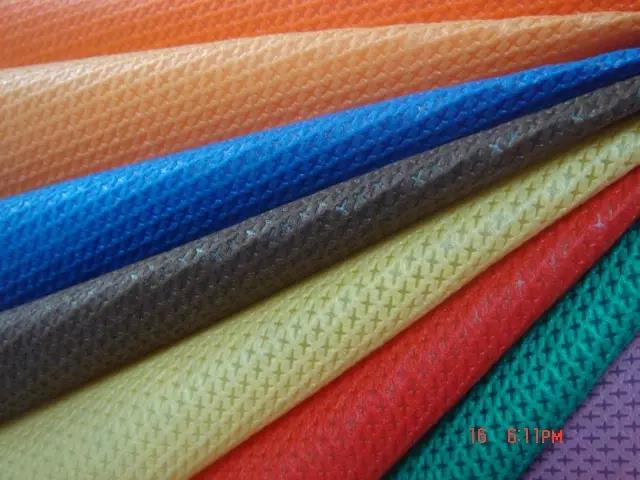Requirements of yarn for bleached, printed and colored blanks
(1) Bleached blanks: After bleaching, the surface of this color cotton fabric is clear and white, so the residual defects on the surface of the fabric are more likely to appear, especially some oil and colored defects (such as bamboo knots, oil flower yarn, oil yarn, color yarn, soot yarn, "three silk" and anisotropic fiber, etc.) must be very careful. Chemical fiber blended chemical fiber fabrics, pure spinning products, because of its own high whiteness, so the above defects requirements are higher.
(2) on the color of the blank: on the color of the blank is divided into two categories: light-colored blanks and dark-colored blanks. Light colored blanks due to lighter color, for the fabric surface of the oil, color yarn, oil yarn, soot yarn, "three silk" and anisotropic fibers and other yarn defects required higher; dark colored blanks on the darker color, for color yarn, oil yarn, soot yarn, uneven stripes and other yarn defects cover strong, but for snakeskin silk, cotton knots, dead cotton and other yarn defects required higher.
The problem of white star in dark colored blanks is a very prominent quality key, mainly formed by the original cotton in the border flap, soft seed surface, dead fibers and other low maturity fibers caused by the failure of the dye on the color, must be noted.
Miscellaneous colored blanks or light-colored blanks and bleached blanks are similar, with higher requirements for oil defects and color defects, and slightly higher requirements for general yarn defects such as dryness, thinning road cross block than dark-colored blanks. The visual impact of different colors on this color cotton cloth will be different, according to experience, Shi Lin color, snow blue, beige, etc. on this color cotton cloth strip dry and other appear very sensitive.

(3) printing blank: printing blank is roughly divided into two categories: dyeing bottom printing and white bottom printing. Dyeing bottom printing because of the color pattern printed on the surface of the cloth, for the surface of this color cotton general oil, color yarn, oil yarn, soot yarn, uneven stripes and other yarn defects and some weaving defects can be covered; white bottom printing because the surface of the cloth is relatively more white, for the above yarn defects requirements are more stringent, and sometimes even requirements and bleached blanks equivalent.
Different dyeing and finishing processes on the requirements of this color cotton fabric
(1) Plain fabric: Plain fabric has tight structure and flat surface, the coverage rate of warp and weft yarn is basically the same, and the tightness is not much different. This color cotton cloth in the spinning line dry bamboo knot, cotton knot impurities, coarse diameter, wrong weft on the dyeing and finishing products are very obvious reflection. As the general spinning department a tube yarn will be concentrated in a section of the door width, the quality of this color cotton fabric is very sensitive to the weft yarn requirements should pay more attention to. Quality requirements of the dyeing and finishing products, warp and weft yarn should be separate cotton, in raw materials, technology to take care of, very on the warp density high, weft density low poplin fabric.

(2) twill organization: the surface of twill organization has a diagonal pattern made by floating long points or weft floating long points in succession. This organization of warp and weft intersection point is less than the plain organization, therefore, its weaving density is generally higher than the plain organization, fabric tightness is greater than the plain organization, and general warp density is higher than the weft density. Fabric organization has two on two, three on one. Two on two under the fabric front and back symmetrical, warp and weft yarn reveal basic consistent. Three on the next fabric front warp yarn reveal more, warp yarn appearance defects simply exposed in the cloth. The weft yarn can be covered up because it is less exposed. For this reason, from the consideration of dyeing and finishing products must focus on the quality of the warp yarn of this color cotton fabric. Hundred feet of defects is twill fabric due to the weft yarn lack of root fabric organization error and the formation of (equivalent to the plain fabric thin weft). Tweed fabric has khaki, wada tweed, wow Kiri three categories. Among them, the tightness of the fabric khaki than wada tweed, wow ki big. General tightness the greater the weaving difficulty, more likely to produce defects.
(3) satin organization: satin organization interlacing point spacing is longer, interlacing point is less, so weaving density can be higher. The surface of the fabric is flat and complete, soft to the touch, after the dyeing resin finishing, electric finish rolling finish is rich in eye-catching finish color. Satin fabric is divided into two kinds of horizontal tribute and straight tribute. The front side of horizontal tribute fabric is mainly formed by the weft yarn, while the straight tribute is mainly formed by the warp yarn, and the weft yarn shows less than the warp yarn. Generally speaking, tribute satin products are medium and high grade products, and have high requirements for yarn defects. Need to pay great attention to.
(4) sparse fabrics: its warp and weft yarn density is low, tightness is small, such as maier yarn, bari yarn, gauze, mosquito net cloth, mesh fabric and other light fabrics. General sparse fabric warp and weft yarn coverage is smaller, revealing more, uneven strip, coarse knots, details, all kinds of defects at a glance, so the requirements are higher.
(5) close fabric: fabric density, tightness is higher, such as corduroy cloth, velvet cloth, rainproof cloth, down cloth, high poplin, etc., tight fabric tightness is high (generally in about 90%), weaving difficulty, simple produce three jump (jump flower, jump yarn, star jump) and other defects; cloth surface requirements flat, complete clean, dry, knotted also have high requirements. Tight fabric because of weft yarn color contrast contrast enhancement, the probability of yellow and white yarn correspondingly increased.
Contact: Jeanne yang(MISS)
Phone: 13912652341
E-mail: [email protected]
Add: Room A2216/A2217,Double-Star Building,No 567 New South Middle Road, KunShan City JiangSu Province ,China.